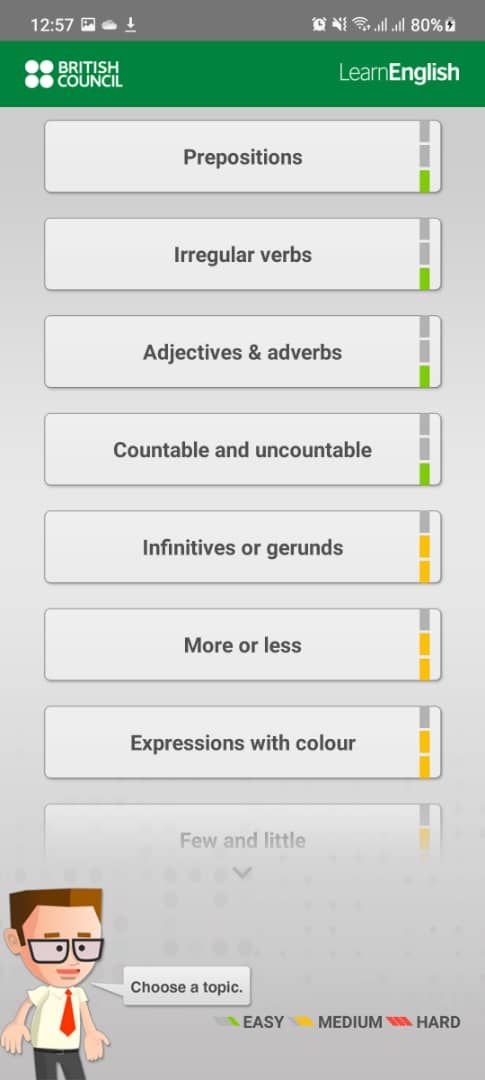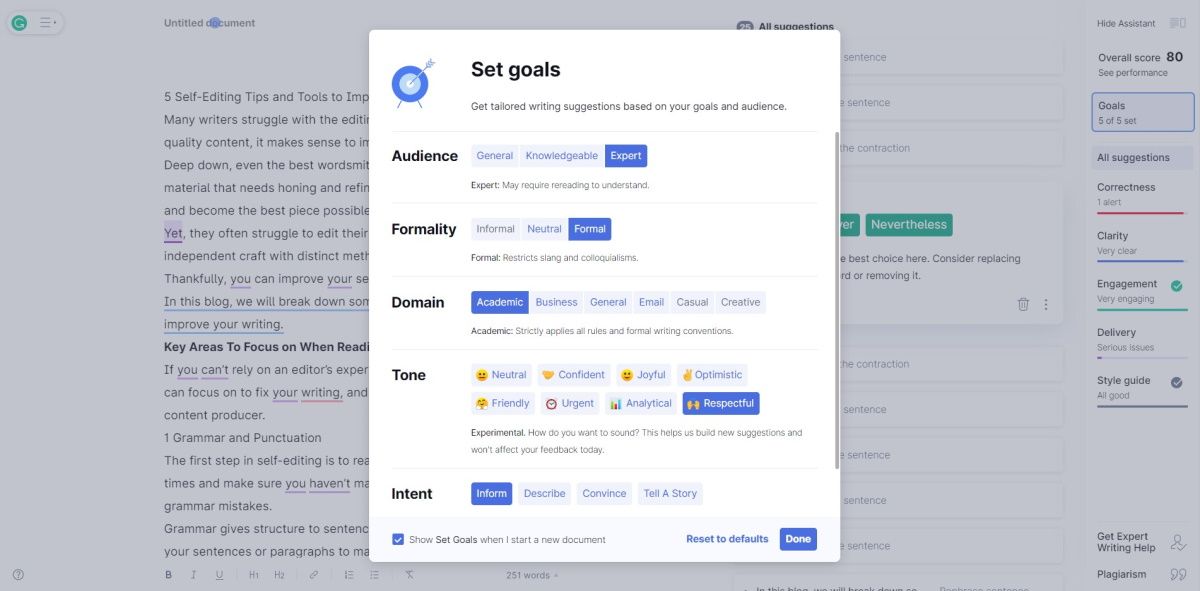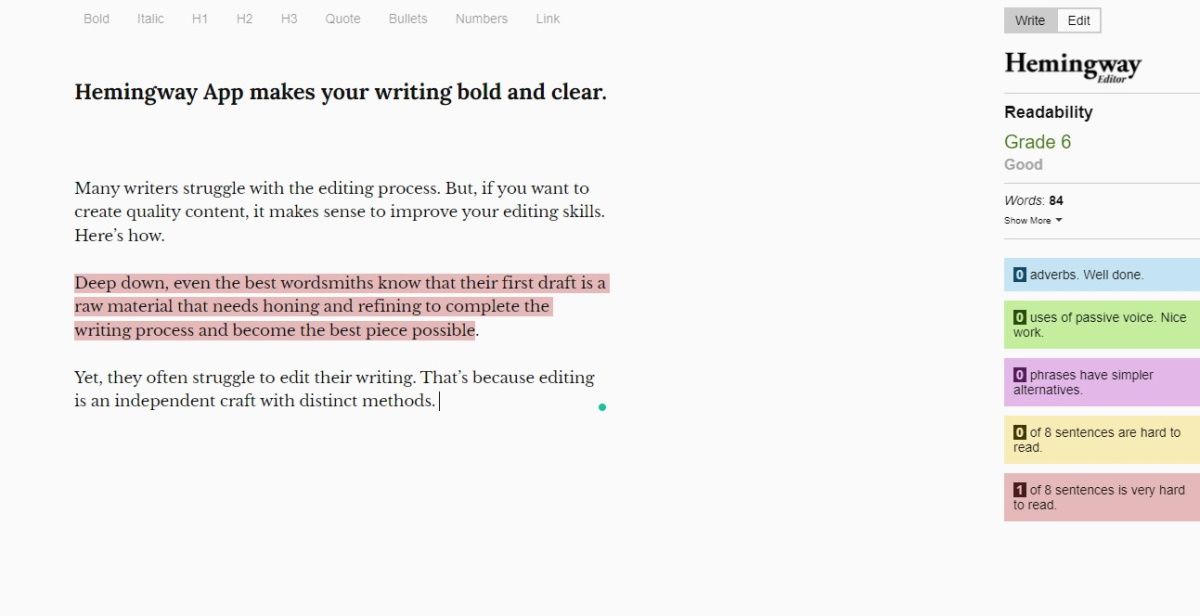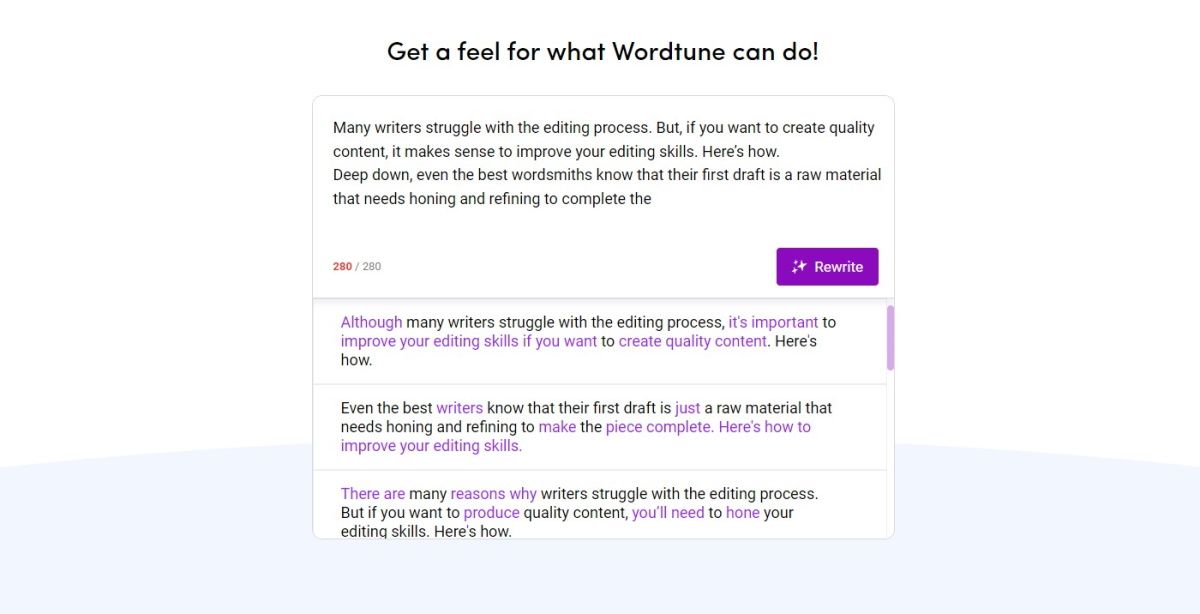Deep down, even the best wordsmiths know that their first draft is a raw material that needs honing and refining to complete the writing process and become the best piece possible.
Yet, they often struggle to edit their writing. That’s because editing is an independent craft with distinct methods. Thankfully, you can improve your self-editing skills.
In this article, we will break down some editing processes to help you improve your writing.
Key Areas to Focus on When Reading Your First Draft
If you can’t rely on an editor’s expertise, there are some critical areas you can focus on to fix your writing, and become a more effective autonomous content producer.
1. Grammar and Punctuation
The first step in self-editing is to read through your first draft a couple of times and make sure you haven’t made any spelling, punctuation, or grammar mistakes.
Grammar gives structure to sentences. It is how you arrange words in your sentences or paragraphs to make meaning. There are many grammar rules, including homophones (it’s-its, they’re-their, here-hear), verb forms, or the subject-object-verb order, to name a few.
You will also need to pay attention to punctuation when self-editing. It is vital to learn when to use common punctuation marks like commas, periods, and question marks, as they add clarity to your sentences.
2. Filler Words
Filler words are unnecessary or redundant words used to fill space in a sentence without adding meaning. Some examples of filler words include actually, basically, just, well, you know, and in order to, to name a few.
When self-editing, paying attention to words/phrases that don’t enhance your writing is vital because they often distract from the message you are trying to convey.
For example: “I was just wondering if you could actually help me with my homework” vs. “Could you please help me with my homework?”. The second question implies that the action is urgent and will require an immediate response.
3. Complex Words
The next step in self-editing is ensuring that you are using words your readers will understand. You are trying to convey a message, not impress your audience.
There’s no need to overcomplicate your writing by filling each sentence with fancy words when there are simpler alternatives because it may “flummox” your audience.
4. Repeated Words
Another area you should watch out for when self-editing is using words multiple times within the same sentence or paragraph. Varying up the word choice in your sentences makes it more interesting and engaging.
For example: “I want to talk about the importance of self-editing your work. Self-editing is important because it helps you improve your writing and gain confidence in what you are saying.”
Try deleting or replacing repeated words with stronger ones that make for a more compelling argument.
5. Passive Voice
Finally, you should also pay attention to the use of passive voice. Passive voice is when the subject of a sentence receives the action instead of performing it. Sentences written in active voice are more direct, precise, and engaging than those reported in passive voice because they focus on who is doing an action.
Passive voice makes your writing more ambiguous and vague. For example:
- The meeting was postponed because nobody showed up on time. (Passive voice)
- The manager postponed the meeting because nobody showed up on time. (Active voice)
Now that you are more equipped to think like an editor, let’s uncover some practical tips to help improve your writing.
How to Edit Your Writing
1. Read It Out Loud
One of the main challenges with self-editing is that you tend to overlook errors in your writing because you see what you intended to write instead of what you wrote. Your mind quickly fills in the gaps and disregards mistakes when you are proofreading.
You can overcome this challenge by taking a break after writing to have a fresh perspective. Then, read your draft out loud. If possible, find someone to listen to you while you read, even if it’s your dog, or record yourself. Reading to an audience will raise the stakes and allow you to take it more seriously.
2. Print It Out
You can take an extra step towards creating a more polished piece by printing out your writing. You can use a highlighter as you read to underline mistakes on your paper.
Furthermore, you can also print it in different fonts and edit your piece in another location to bring out a fresh perspective. The change of medium will allow you to see what you wrote differently.
3. Drop Clichés
Clichés are phrases that have become overused and lost their originality. Creative and original writing will captivate your readers. On the other hand, using bland expressions will dilute your content.
Examples of clichés include “at the speed of light”, “a drop in the ocean”, “avoid like the plague”, to name a few.
4. The Ten Percent Rule
Writing is a creative process that often involves splurging out all your thoughts on paper before forgetting them. Self-editing allows you to rearrange those sentences and eliminate unnecessary details. This is where Stephen King’s 10% rule, derived from his book “On Writing: A Memoir of the Craft”, can be of great use.
This means that after writing your first draft, aim to delete 10% of it while self-editing. So, if you are writing a 1000-words article, make it 900 by removing unnecessary parts.
5. Separate Your Editing Tasks
If you find the thought of editing your writing intimidating, you can separate it into smaller and more manageable steps. For example, you can focus on the flow of your ideas in your first read-through. You can further break down your editing task using the checklist above—use your second read-through for grammar and punctuation fixes, and so on.
While you have gotten closer to improving your writing, you can leverage some editing resources to ease your burden and further clean up your draft.
Best Editing Tools to Enhance Your Writing
1. Grammarly
Grammarly is one of the most effective online editing checker tools out there. You can use it to refine your draft by checking for spelling, grammar, and punctuation mistakes. Its premium version offers detailed writing suggestions, plagiarism, and passive voice detection.
2. The Hemingway App
The Hemingway app is a writing and editing tool that helps you improve your copy by highlighting adverbs, passive voice, confusing sentence construction, and other common errors.
You can use its writing mode for a distraction-free experience or switch to editing mode to highlight and correct the mistakes in your writing, and improve its readability.
3. Synonym.com
If you’re looking for an alternative to a word that’s feeling a little played-out, synonym.com is your new best friend. This website makes it easy to find a synonym for any word, so you can keep your writing fresh and engaging.
With synonym.com by your side, you’ll have a comprehensive list of synonyms that are easy to search for and help you get your point across with ease.
4. Johnny Grammar’s Word Challenge



We all know that grammar and spelling can be a bit tough to keep up with sometimes, but there’s no need for your writing to suffer! Johnny Grammar’s Word Challenge is an effective learning tool for anyone who needs help mastering common vocabulary, spelling, and grammar usage in the English language.
5. Wordtune
Wordtune is an AI-powered tool that helps you put your thoughts into words more compellingly and clearly. You only need to copy and paste your content in the Wordtune editor, highlight the text you wish to improve, and it will provide pertinent suggestions. It can also help you choose the right voice tone depending on your audience.
Take Your Writing to the Next Level
Writing is a skill that takes practice and time to master. One way you can improve your writing skills, though, is by self-editing. This means reviewing your content with a critical eye and ensuring everything is up to par before publishing anything.
You can also leverage the tools mentioned above to fine-tune your writing further.







